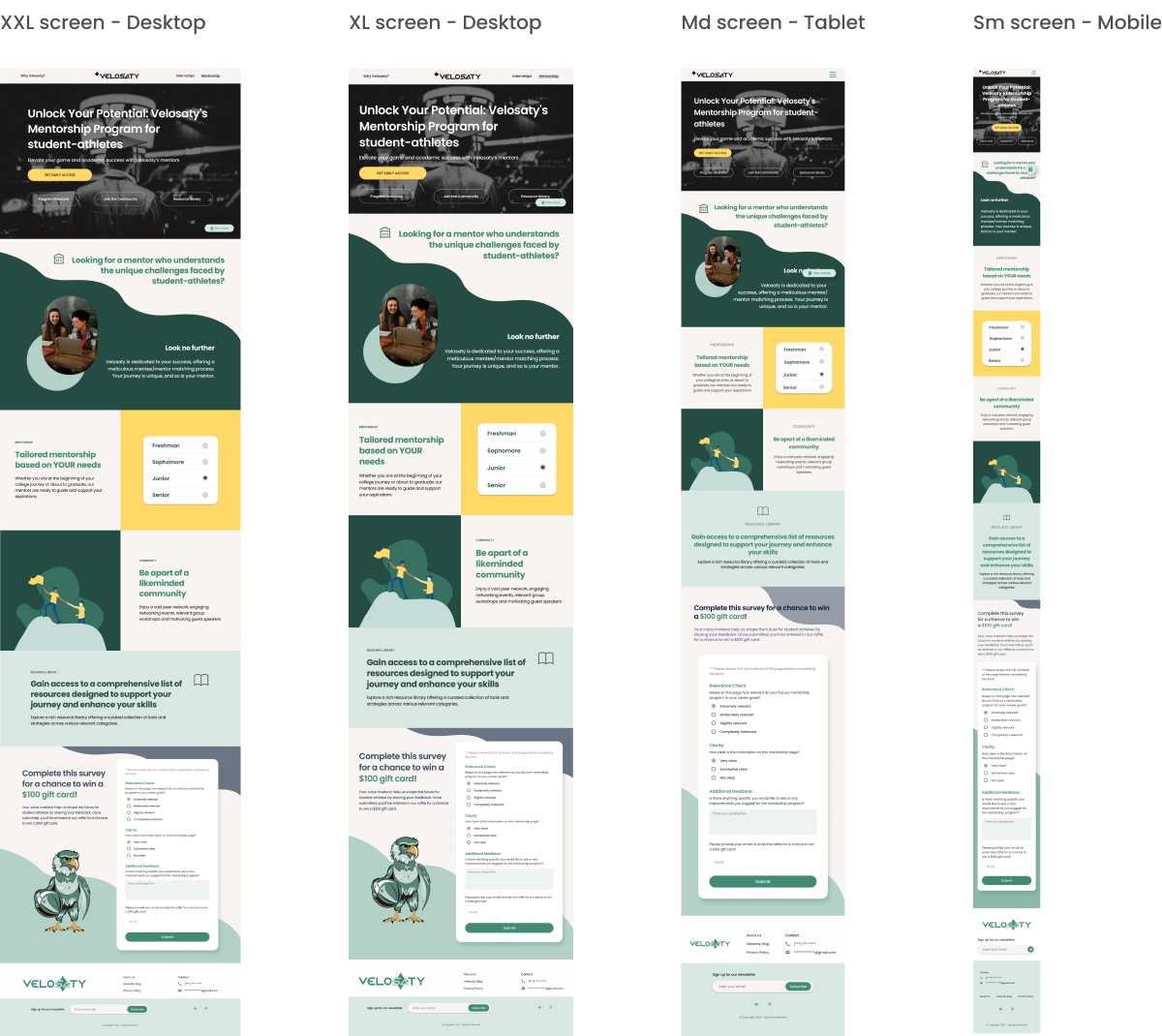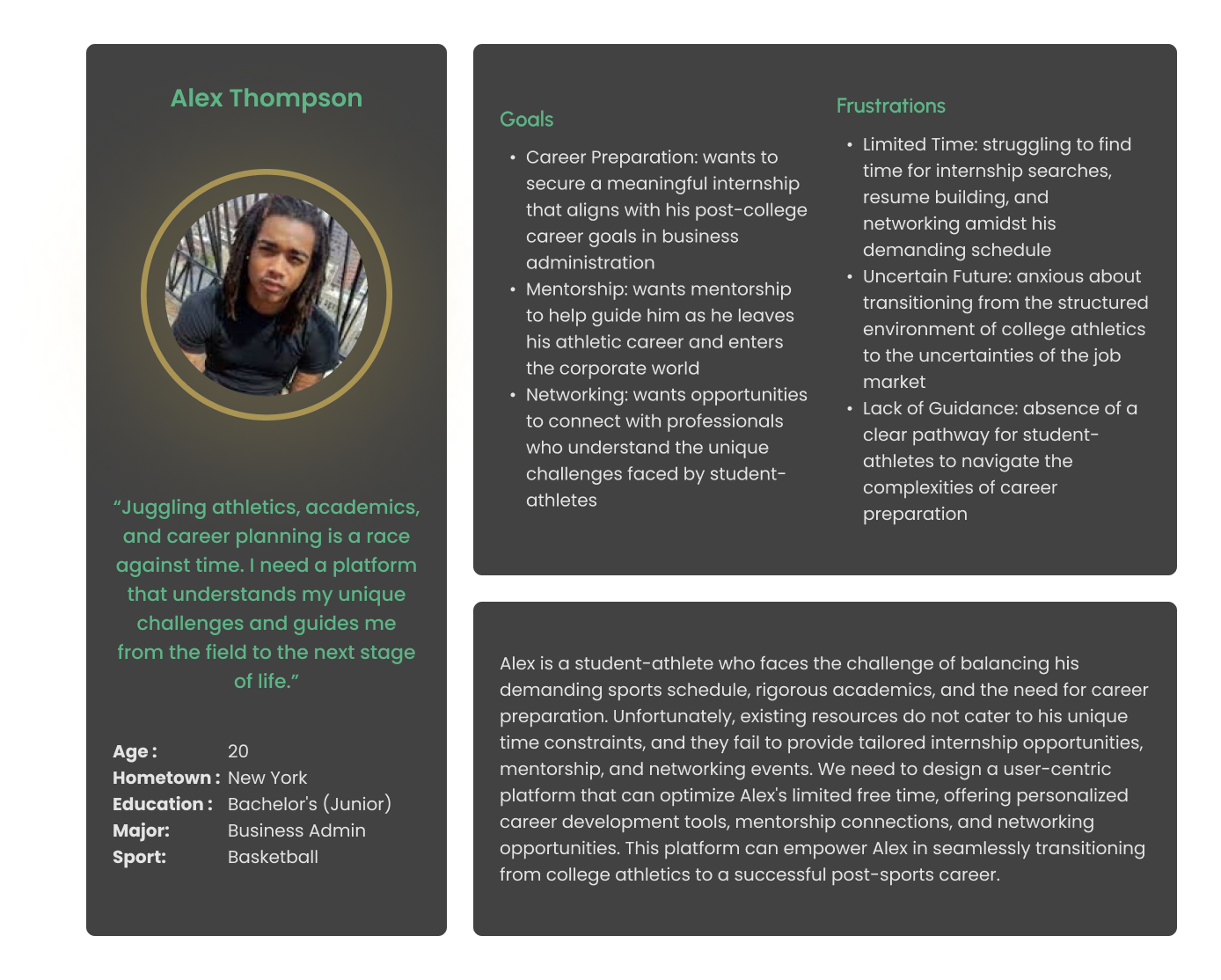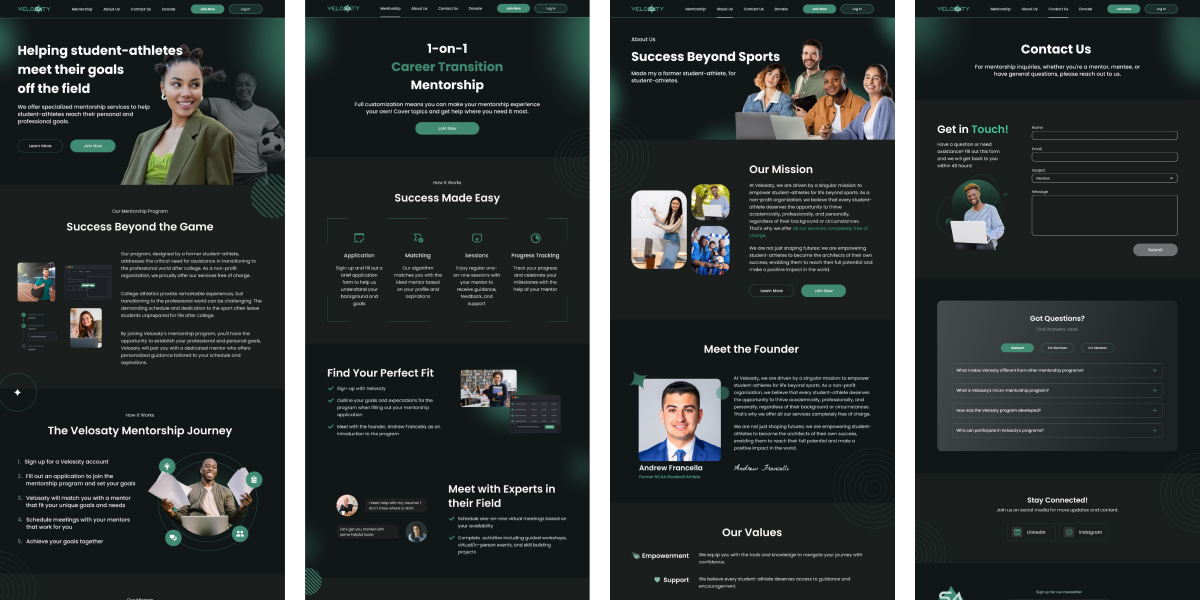Snapshot
Who is Velosaty?
Velosaty is dedicated to empowering student-athletes as they navigate life beyond sports. By aligning athletic and academic ambitions, Velosaty facilitates personalized 1-1 mentorship experiences through an intuitive website and dashboard, guiding athletes in their academic and professional journeys.
My Contribution:
I actively contributed to the development of Velosaty's mentorship program by conducting extensive research and collaborating closely with the design team. My responsibilities included performing literature reviews, conducting user interviews and surveys, and auditing existing mentorship platforms to uncover key insights. Using this research, I played a pivotal role in defining the core functionalities and features of the mentorship program, ensuring the platform addressed the unique needs of student-athletes and delivered a user-centered experience.
Role:
UX/UI design
Duration:
Aug’23 - Present
S/W Used:
Figma, Google Suites, Slack, Zoom
Documents linked to this case study:
Other connected projects:
Case Study Outline
Research Foundations & Impact
01Literature review
02This review provided actionable insights and best practices, shaping a user-focused and effective mentorship solution.
-
Effectiveness:
Explored the impact of mentorship on career growth, skill development, and satisfaction, highlighting factors driving success.
-
Mentorship Models:
Analyzed one-on-one, group, and peer mentoring models, assessing their suitability across career stages.
-
Key Components:
Identified essentials like mentor-mentee matching, goal-setting, feedback, and structured curricula for effective programs.
-
Mutual Benefits:
Reviewed benefits for mentees (career guidance, networking) and mentors (leadership development, job satisfaction).
-
Challenges:
Addressed barriers such as resource limitations and communication gaps, with strategies to enhance outcomes.
-
Future Trends:
Explored innovations like technology integration, online platforms, and embedding mentorship in education.
Survey
03We’ve included a brief description of our mentorship program along with a feedback form to gather user insights and expectations for the upcoming program. This form is designed to collect user-specific requirements, enabling us to tailor the mentorship experience to their needs.

User Interviews
04A cohort of 12 student-athletes engaged in our mentorship program, taking on roles as mentors or mentees. Through a structured evaluation, participants shared insights about their personal backgrounds, program experiences, and overall feedback.
-
Clear Expectations and Communication:
Establishing well-defined goals and open lines of communication emerged as critical for fostering productive mentor-mentee relationships.
-
Qualities of an Effective Mentor:
Good mentors excel as active listeners and provide constructive, actionable feedback, which significantly enhances the mentoring experience.
-
Career Guidance and Mental Health Support:
Addressing both professional development and emotional well-being proved to be highly valuable for participants.
-
Flexibility in Approach:
The ability to adapt to the evolving needs of participants ensures the program remains relevant and impactful.
-
Importance of One-to-One Interaction:
Personalized engagement was found to be crucial for effective mentorship, building trust and meaningful connections.
Market research
05Our research identifies specific areas where student-athletes are more likely to need assistance in their education and career development. These include:
-
Targeted Institutions:
- Division 2 and 3 schools
- Schools with low graduation rates
- Institutions with low post-graduation job placement rates
-
Key Demographic Identifiers:
- Students from low socioeconomic backgrounds
- Differentiation between athletes pursuing scholarships, traditional career paths, or professional sports careers
- Geographic location
- Sports such as basketball, football, and soccer, which often attract participants from low socioeconomic backgrounds due to their lower cost of entry
-
Why Focus on Division 2 and 3 Schools?
While Division 1 schools often provide robust support, Division 2 and 3 institutions frequently lack comprehensive academic and career resources. Student-athletes in these schools face unique challenges, including limited access to mentorship and post-college career preparation tools.
-
Why Prioritize Low Socioeconomic Status Student-Athletes?
This group often faces the steepest barriers to success, including limited access to financial literacy and career planning tools. By focusing on student-athletes from low socioeconomic backgrounds, Velosaty seeks to deliver targeted support where it’s needed most, helping these individuals overcome systemic challenges and achieve their potential.

Competitor audits
06A comprehensive audit of competing student-athlete mentorship programs was conducted to evaluate their structure, effectiveness, and strengths. This analysis provided actionable insights to inform the development of a more impactful and differentiated mentorship program
-
Pricing Models:
- Flexible options: hourly, monthly, subscription-based, or package-based
-
Mentoring Services:
- Mentor-set pricing with subscription options
- Engagement methods: voice/video calls, messaging, and additional services (e.g., resume reviews)
- Mentor vetting through application and review processes
-
Site Functionalities:
- Search/filter tools and free trials (e.g., 7-day)
- Options for single or multiple mentors
-
Additional Features:
- In-person meetups, professional talks, messaging services
- Calendar tools and meeting reminders
Monetization for mentorship program
07- Partnering with schools can be beneficial as they often allocate funds for programs like this.
- Donors from large institutions such as parents and coaches may be passionate about supporting athletes.
- Nonprofits can also be a valuable resource and may partner with platforms or individuals to distribute funds.
- Another option to consider is licensing, such as implementing a formal mentorship program.

